
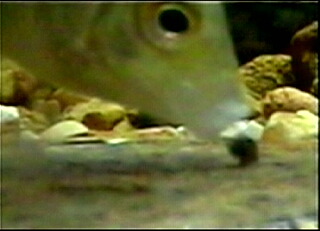
 |
 |
| Snails can experience hydrodynamic lift and drag forces that
change on a relatively slow time scale when living in flowing water environments
(e.g., streams, rivers, backwater channels). Suction feeding fishes (such as redear sunfish, Lepomis gulosis) can create, however, a unique and transient hydrodynamic environment in which water is forced to flow over the snail in unexpected directions and with high acceleration. In this project, we are attempting to quantify the forces experienced by snails subjected to such feeding strikes, and to determine whether shell size, shape, and/or orienation to the strike can affect the magnitude of these forces.
Some data for this project have come from behavioral observations of captive redear sunfish feeding on snails in the laboratory (see photo at the top of the page). Remaining data come from studies using an artificial fish mouth, constructed in the laboratory for this project. |
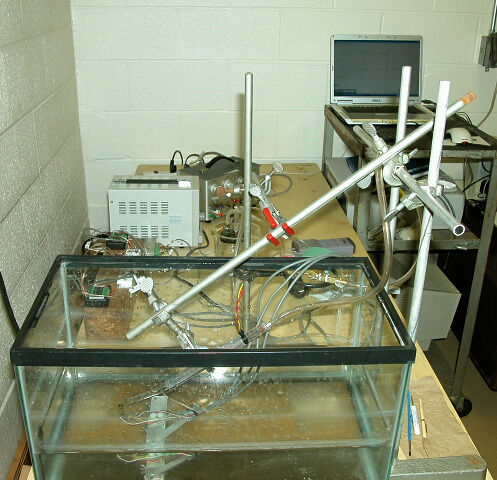 |
| The photo above shows the artificial fish mouth in the laboratory; components are shown in the annotated photo below. Briefly, a vaccuum of known magnitude is drawn on a vaccuum jar, connected to the mouth opening itself (the bottom of a plastic pipette) through an air-tight solenoid valve. The valve is opened for a pre-determined amount of time (typically ~ 40 milliseconds) in response to a DC pulse from a physiological stimulator. This allows a fixed volume of water to rush into the mouth opening in a set amount of time.
By orienting the opening of the mouth toward a target shell mounted on a force platform, the force of suction exerted on the shell can be measured in each dimension (fore-aft, left-right, up-down). Several replicate artificial strikes are typically performed on each shell in each of four orientations. |
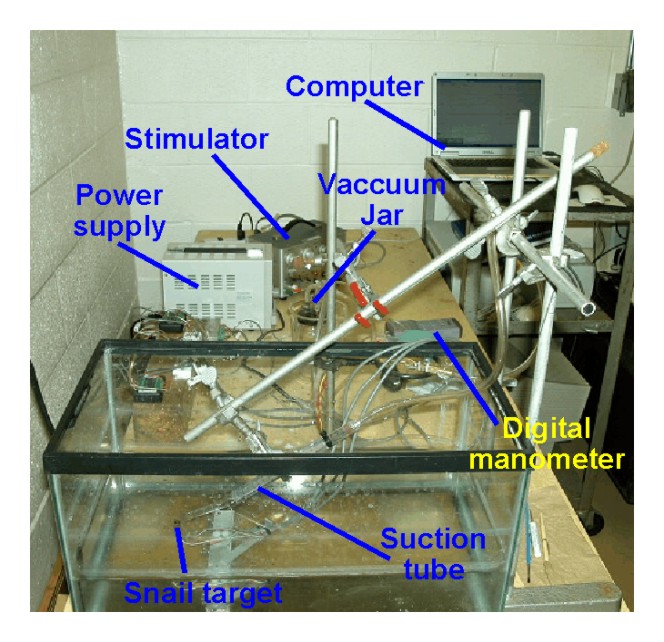 |
| The photos below show close-up views of the fish mouth pipette opening oriented over a target shell mounted on the force platform. Note the meniscus of water near the end of the tube, showing that the tube is almost empty of water immediately before a simulated strike. |
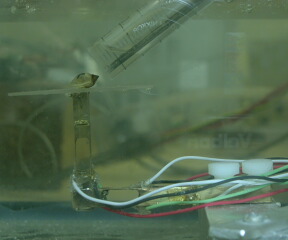 |
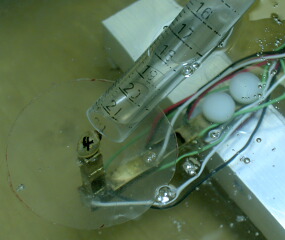 |